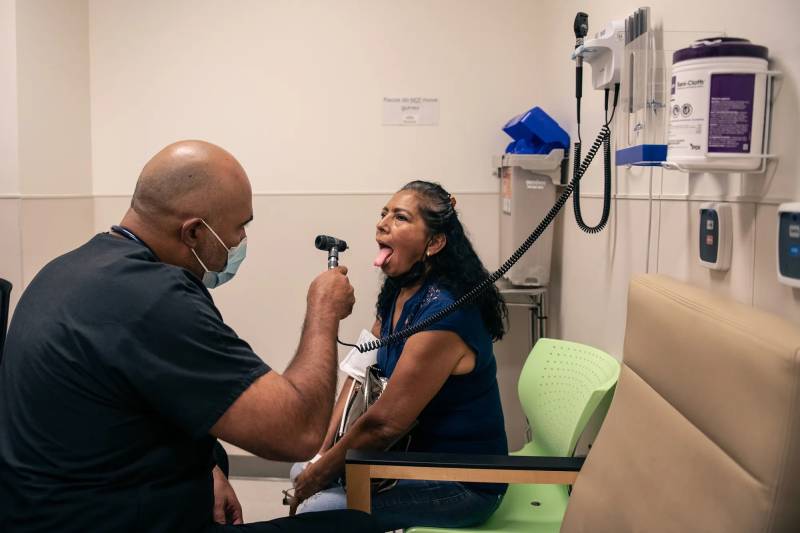Now, six months into the renewed eligibility process, thousands of eligible Californians are finding out, often during doctor’s visits, that they’ve lost their coverage due to missing or incomplete paperwork.
More than 930,000 people have had their Medi-Cal coverage terminated this year, according to state data. The vast majority of them — close to 90% — lost coverage because of so-called “procedural reasons,” often entailing problems with paperwork. California has the country’s fourth highest rate of terminations linked to procedural issues, according to the health policy research organization KFF (formerly known as the Kaiser Family Foundation).
Among Californians eligible for Medi-Cal renewals, 47% retained coverage, 15% were kicked off for paperwork problems, 2% no longer qualified and 35% are still under review, the KFF tracker shows.
People who lose their Medi-Cal coverage but are still eligible can hop back on within a 90-day grace period as long as they submit any missing information through the mail or online. As of October, the program covered 15.1 million people in California.
“During COVID, the message was ignore, ignore, don’t worry. For close to four years, we told people not to worry, and then all of a sudden, they had to worry,” said Celia Valdez, director of outreach and education at the Los Angeles nonprofit Maternal and Child Health Access. Her organization helped Miguel reinstate her kids’ Medi-Cal. But experiences like Miguel’s are common, she said.
“Many [enrollees] are saying, ‘I couldn’t fill my prescription, I went to the doctor and they told me I have no coverage,’” Valdez said.
People who are being disenrolled for “procedural reasons” tend to fall into several buckets, including those who are new to the program and may not understand that they now have to respond to yearly reviews, said Yingjia Huang, assistant deputy director at the California Department of Health Care Services, the state agency that oversees the Medi-Cal program.
Other people may now have health insurance through an employer and are not filling out their paperwork because they no longer need Medi-Cal nor would they qualify, Huang said. And some who moved during the pandemic may not have received the renewal alert this year because they neglected to report their new address to their county Medi-Cal office.
